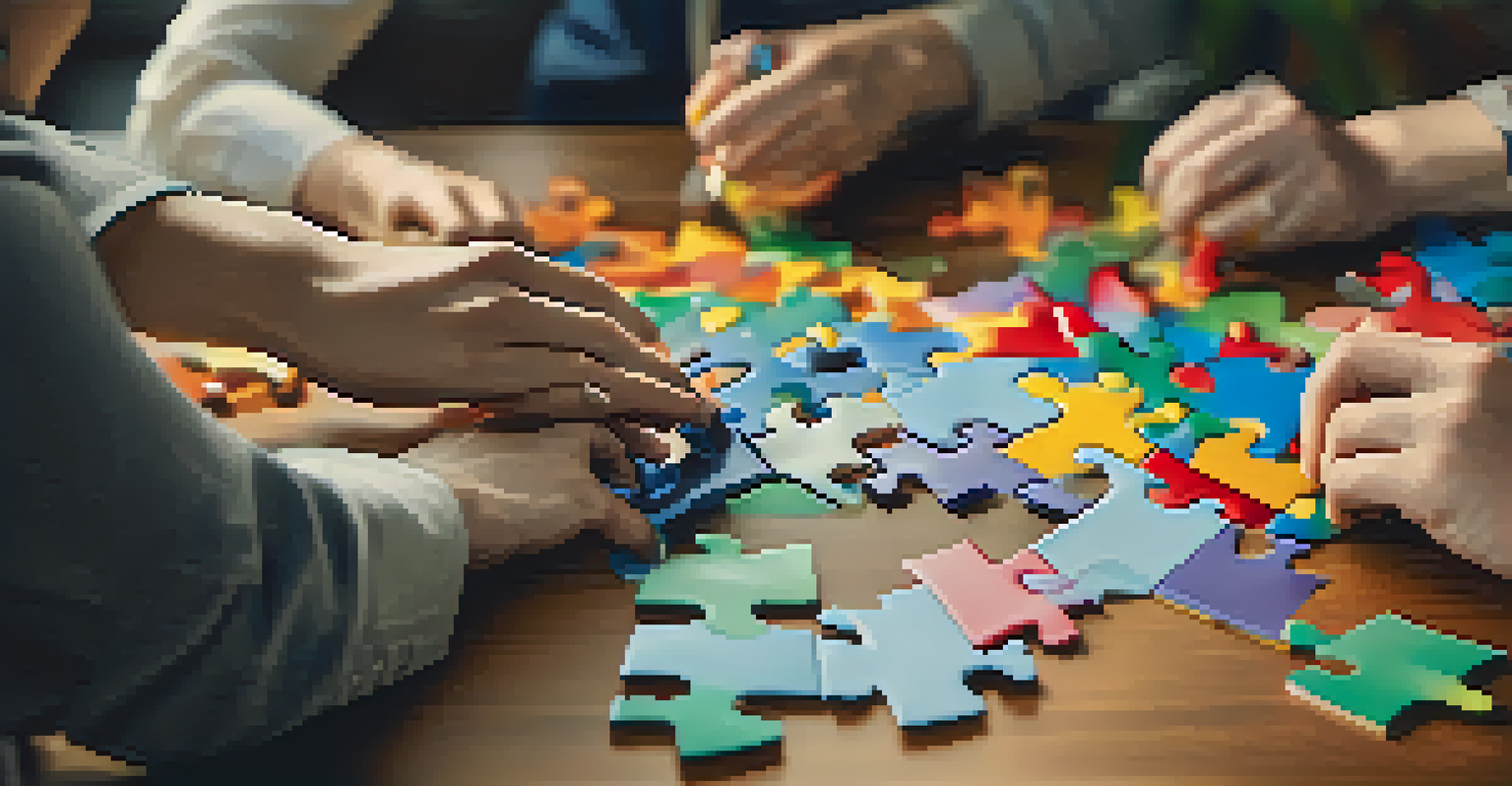Team Dynamics: Understanding Roles for Effective Collaboration

What Are Team Dynamics and Why Do They Matter?
Team dynamics refer to the unseen forces that influence how a team operates. These forces can include relationships, communication styles, and individual personalities. Understanding these dynamics is essential for fostering a productive environment where collaboration thrives.
The strength of the team is each individual member. The strength of each member is the team.
When team members understand their roles and how they interact, it leads to improved communication and efficiency. For example, a team that recognizes the strengths of each member can delegate tasks more effectively, ensuring that everyone contributes their best work. This not only boosts morale but also enhances overall performance.
Ultimately, recognizing and nurturing positive team dynamics can be the difference between a successful project and a stalled one. By investing time in understanding how team members relate to one another, organizations can cultivate environments where creativity and collaboration flourish.
Identifying Different Roles Within a Team
Every team is made up of individuals who naturally gravitate toward certain roles. These roles can range from leadership positions, like project managers, to more supportive roles, such as researchers or detail-oriented analysts. Identifying these roles helps clarify expectations and responsibilities.

For instance, a team might have a visionary who generates innovative ideas, while another member excels at organizing and executing those ideas. By recognizing these differences, teams can leverage their diverse talents to achieve common goals. This understanding encourages a sense of belonging and purpose among team members.
Team Dynamics Drive Collaboration
Understanding team dynamics is essential for fostering a productive environment where collaboration thrives.
In essence, knowing the various roles within a team allows for better alignment of skills and tasks. This clarity not only elevates performance but also fosters a more enjoyable work experience as team members feel valued for their unique contributions.
The Importance of Communication in Team Dynamics
Effective communication is the backbone of successful team dynamics. When team members communicate openly and honestly, it creates an atmosphere of trust and respect. This is crucial for collaboration, as it encourages individuals to share ideas and provide constructive feedback.
Diversity is not about how we differ. Diversity is about embracing one another's uniqueness.
For example, consider a scenario where a team member feels comfortable voicing concerns about a project direction. This openness can lead to valuable discussions that might otherwise be stifled, resulting in a better outcome for the project. Without communication, misunderstandings can arise, leading to frustration and disengagement.
Thus, fostering a culture of open communication is essential for any team aiming to collaborate effectively. Regular check-ins, team meetings, and feedback sessions can help ensure that everyone is on the same page and that any potential issues are addressed promptly.
Building Trust Among Team Members
Trust is a critical component of effective team dynamics. When team members trust one another, they are more likely to share ideas, take risks, and support each other in achieving common goals. This sense of safety can significantly enhance collaboration and innovation.
One way to build trust is by encouraging team bonding activities, whether through team-building exercises or casual social outings. These experiences help team members see each other as individuals, not just colleagues, fostering deeper connections. For example, a team that shares a fun experience is more likely to collaborate effectively in high-pressure situations.
Clear Roles Enhance Team Efficiency
Identifying different roles within a team clarifies expectations and responsibilities, allowing for better alignment of skills and tasks.
Ultimately, trust serves as the foundation upon which strong teams are built. Establishing trust not only improves collaboration but also leads to higher job satisfaction and lower turnover rates, making it a vital focus for any team leader.
Conflict Resolution Strategies in Teams
Conflict is a natural part of any team dynamic, but how it is managed can either enhance or hinder collaboration. Addressing conflicts promptly and constructively can lead to better understanding and stronger relationships among team members. Ignoring issues, on the other hand, can create tension and reduce productivity.
Implementing conflict resolution strategies, such as active listening and mediation, can help teams navigate disagreements more effectively. For instance, allowing each party to express their viewpoint without interruption can lead to a more productive discussion. This approach not only resolves the immediate issue but also teaches team members valuable communication skills.
By embracing conflict as an opportunity for growth, teams can foster a culture of resilience and adaptability. When conflicts are resolved constructively, teams emerge stronger and more united, ready to tackle future challenges together.
Setting Clear Goals for Effective Collaboration
Setting clear, achievable goals is crucial for guiding a team's efforts and fostering collaboration. When everyone understands the objectives, it becomes easier to align tasks and responsibilities. This clarity can significantly enhance motivation and accountability among team members.
For example, a team that sets specific milestones for a project can track progress more effectively. Celebrating small wins along the way can boost morale and keep everyone engaged. Conversely, lack of clear goals can lead to confusion and wasted effort, undermining the team's potential.
Open Communication Builds Trust
Effective communication creates an atmosphere of trust, enabling team members to share ideas and collaborate more successfully.
Thus, goal-setting should be a collaborative process where all team members have input. This involvement not only ensures buy-in but also helps create shared ownership of the team's success. Effective collaboration thrives on a foundation of clear and well-communicated goals.
Embracing Diversity for Enhanced Team Dynamics
Diversity within a team can lead to richer ideas and more innovative solutions. Embracing different backgrounds, perspectives, and skills allows teams to approach challenges creatively. This diversity can enhance problem-solving and decision-making processes.
For instance, a team composed of individuals from various cultures may consider a wider range of solutions to a problem than a more homogenous group. Recognizing and valuing these differences can lead to more effective collaboration as each member contributes their unique insights. It's like adding vibrant colors to a painting—each hue enhances the overall masterpiece.

Therefore, fostering an inclusive environment is essential for maximizing the benefits of diversity. Encouraging diverse voices in discussions and decision-making not only improves team dynamics but also leads to greater innovation and success.